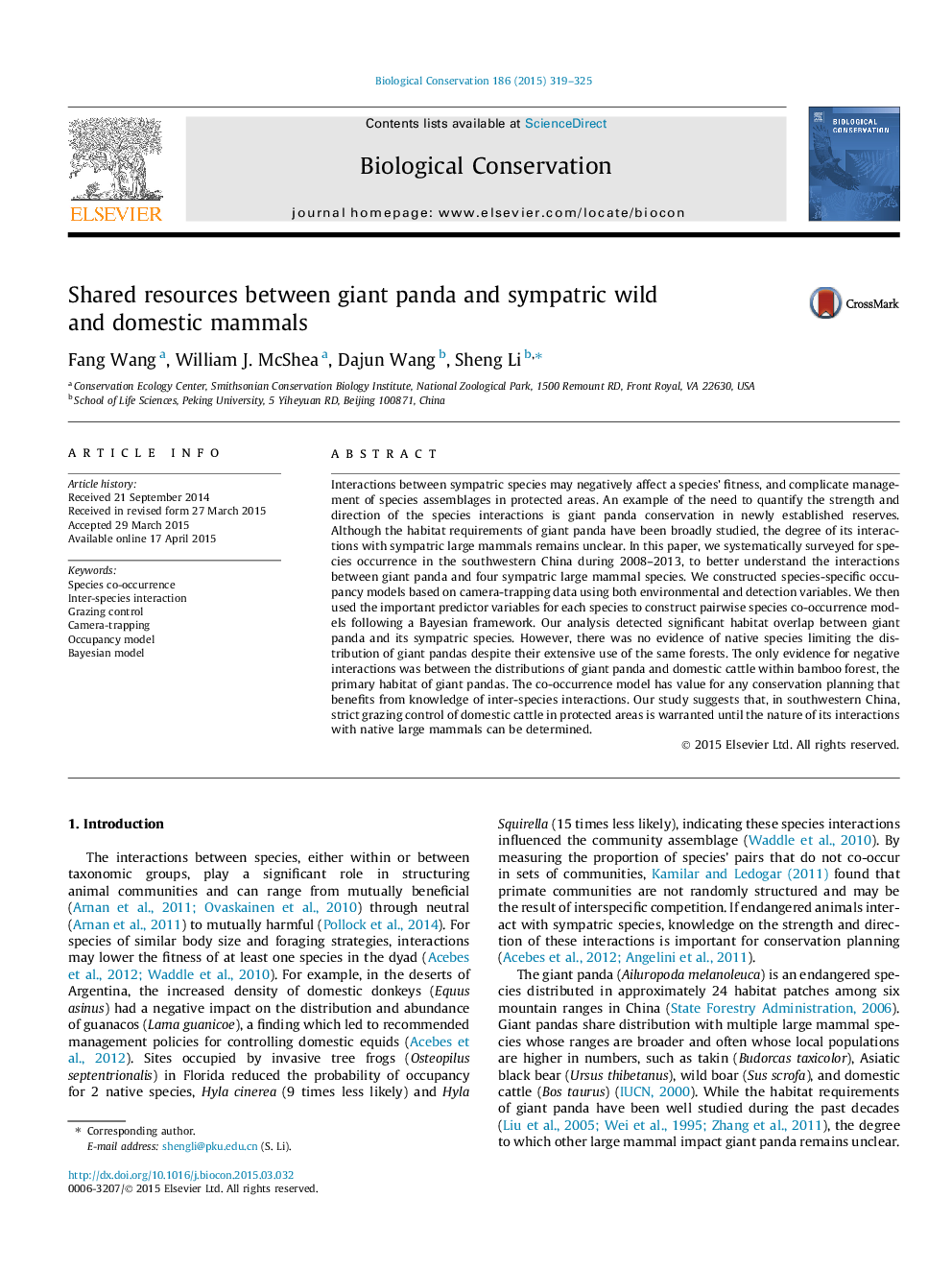| Article ID | Journal | Published Year | Pages | File Type |
|---|---|---|---|---|
| 6299737 | Biological Conservation | 2015 | 7 Pages |
Abstract
Interactions between sympatric species may negatively affect a species' fitness, and complicate management of species assemblages in protected areas. An example of the need to quantify the strength and direction of the species interactions is giant panda conservation in newly established reserves. Although the habitat requirements of giant panda have been broadly studied, the degree of its interactions with sympatric large mammals remains unclear. In this paper, we systematically surveyed for species occurrence in the southwestern China during 2008-2013, to better understand the interactions between giant panda and four sympatric large mammal species. We constructed species-specific occupancy models based on camera-trapping data using both environmental and detection variables. We then used the important predictor variables for each species to construct pairwise species co-occurrence models following a Bayesian framework. Our analysis detected significant habitat overlap between giant panda and its sympatric species. However, there was no evidence of native species limiting the distribution of giant pandas despite their extensive use of the same forests. The only evidence for negative interactions was between the distributions of giant panda and domestic cattle within bamboo forest, the primary habitat of giant pandas. The co-occurrence model has value for any conservation planning that benefits from knowledge of inter-species interactions. Our study suggests that, in southwestern China, strict grazing control of domestic cattle in protected areas is warranted until the nature of its interactions with native large mammals can be determined.
Related Topics
Life Sciences
Agricultural and Biological Sciences
Ecology, Evolution, Behavior and Systematics
Authors
Fang Wang, William J. McShea, Dajun Wang, Sheng Li,
